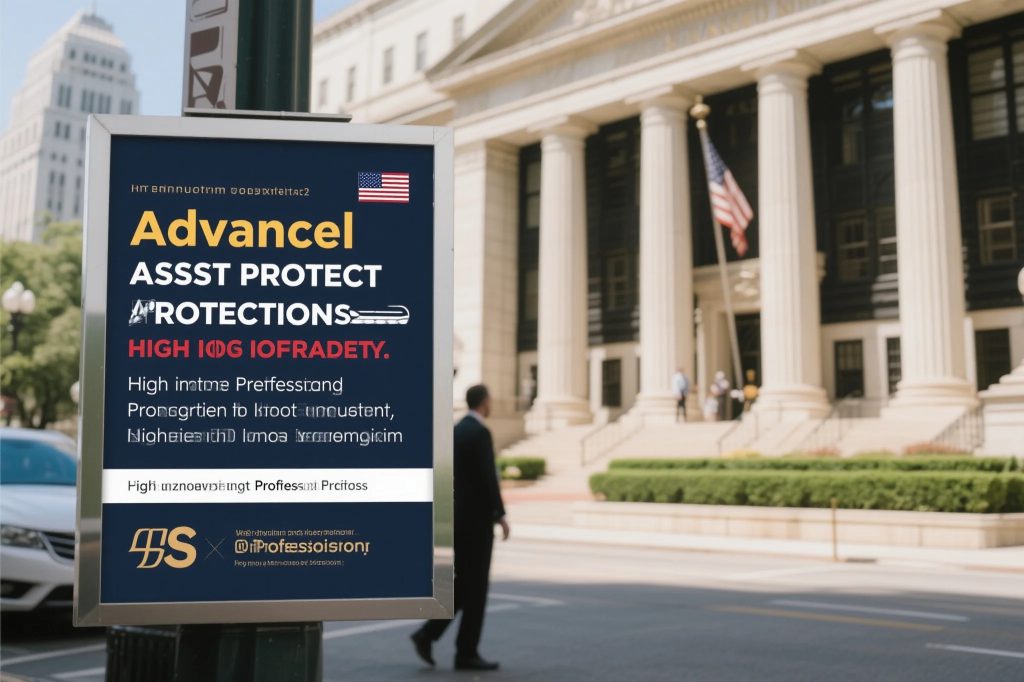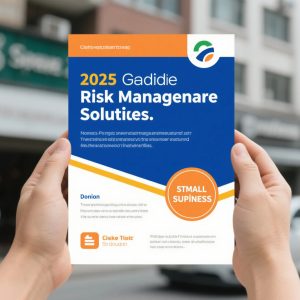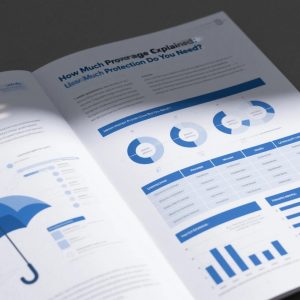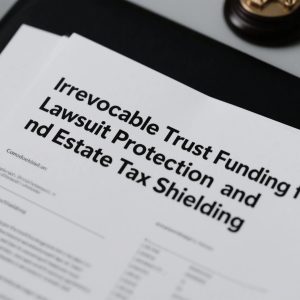The Unique Vulnerability of High-Earning Professionals
Physicians, attorneys, executives, and other high-income professionals face extraordinary exposure to financial threats that demand sophisticated asset protection strategies. Unlike traditional business owners, professionals often can’t rely on simple LLC structures due to licensing restrictions and ethical rules governing their practices. This creates a paradox where those with the highest earning potential frequently have the weakest structural defenses against lawsuits, divorce claims, and creditor actions. The solution lies in developing customized risk mitigation plans that work within professional constraints while providing robust protection.
Malpractice judgments exceeding policy limits represent just one of several existential threats. Business divorce scenarios, partnership disputes, and even personal injury claims unrelated to professional practice can jeopardize decades of accumulated wealth. Modern professional liability shielding requires understanding both the legal vulnerabilities unique to licensed professionals and the specialized tools available to address them without violating ethical boundaries or licensing requirements.
Layered Entity Structures for Protected Practices
While most professionals can’t place their license or primary practice into protective entities, strategic structuring of ancillary business activities can create significant asset protection strategies. This often involves establishing management service organizations (MSOs) to handle non-licensed aspects of the practice, real estate holding companies for office properties, and separate entities for intellectual property or ancillary business lines. Each layer adds complexity for potential claimants while maintaining full compliance with professional regulations.
The most effective risk mitigation plans coordinate these entities through carefully drafted agreements that preserve professional independence while maximizing asset protection. For example, a physician might own their medical practice personally (as required by state law) while having an MSO LLC manage the office staff, equipment leases, and billing – with the MSO owned by an irrevocable trust. This structure protects the practice’s valuable assets without violating corporate practice of medicine doctrines.
Advanced Insurance Solutions Beyond Malpractice
Traditional malpractice insurance forms just one component of comprehensive professional liability shielding. High-income professionals should consider umbrella policies specifically designed for their unique exposures, including personal injury protection extending to libel, slander, and defamation claims. Excess liability coverage becomes particularly important for professionals with public visibility or those serving on corporate boards where D&O insurance may have gaps.
Innovative insurance products now allow professionals to integrate their asset preservation planning with risk transfer solutions. Hybrid disability-liability policies, for instance, can protect against both loss of income and legal judgments stemming from inability to practice. Similarly, whole life policies with accelerated benefit riders provide liquidity precisely when needed during legal crises while growing protected cash value over time.
Domestic Asset Protection Trusts: A Game Changer
The advent of domestic asset protection trust (DAPT) statutes in states like Nevada, South Dakota, and Delaware has revolutionized asset protection strategies for professionals. These trusts allow creators to be discretionary beneficiaries while providing strong creditor protection – a combination previously only available through offshore structures. Proper irrevocable trust funding of a DAPT can shield substantial assets without the international complexity of foreign trusts.
Timing is critical when implementing DAPTs as part of risk mitigation plans. Most states require that assets be transferred well before any claim arises to avoid fraudulent conveyance challenges. Professionals should consider funding these trusts during residency changes (which can reset fraudulent transfer clocks) or after significant liquidity events like practice sales or inheritance receipts when substantial assets become available for protection.
Retirement Plan Maximization Strategies
ERISA-qualified retirement plans represent one of the most powerful yet underutilized professional liability shielding tools available. These plans enjoy virtually absolute protection from creditors under federal law, yet many high-earning professionals fail to maximize their contributions. Advanced strategies like defined benefit/cash balance hybrid plans can allow annual contributions exceeding $200,000 in some cases, rapidly building protected wealth.
Integrating retirement accounts into broader asset preservation planning requires careful coordination with other structures. For instance, a professional might combine a cash balance plan with a profit-sharing plan and 401(k), then use after-tax dollars to fund a backdoor Roth IRA – creating multiple layers of protected retirement assets. Non-qualified deferred compensation plans can extend these protections for income exceeding qualified plan limits when properly structured.

Strategic Real Estate Holdings
Real estate ownership presents both risks and opportunities in asset protection strategies. Professionals should hold investment properties in separate LLCs or limited partnerships, with equity interests owned by protected entities like DAPTs or retirement accounts. Primary residences benefit from state homestead exemptions, which in states like Florida and Texas provide virtually unlimited protection for home equity.
Creative risk mitigation plans for real estate might include fractionalizing ownership through tenancy-in-common arrangements, using private financing rather than traditional mortgages to avoid personal guarantees, or transferring properties to children through installment sales that maintain cash flow while removing equity from the professional’s balance sheet. Each approach requires careful tax planning to avoid unintended consequences.
Intellectual Property Protection Techniques
For professionals developing books, courses, patents, or other intellectual property, specialized professional liability shielding strategies can prevent these valuable assets from becoming litigation targets. Holding IP in separate LLCs or corporations, preferably in IP-friendly states like Delaware, creates barriers to enforcement. Licensing back the IP to the professional’s practice through carefully drafted agreements maintains usability while limiting exposure.
More advanced irrevocable trust funding strategies involve transferring IP to dynasty trusts before it appreciates significantly, potentially removing both the asset and its future income stream from the professional’s taxable estate. This approach works particularly well for younger professionals early in their careers who anticipate creating substantial IP value over time.
Family Limited Partnerships for Multi-Generational Protection
Family limited partnerships (FLPs) remain powerful tools in comprehensive asset preservation planning, allowing professionals to maintain control over assets while transferring value to protected family members. The discounting features of FLP interests can significantly reduce the taxable value of gifts while providing strong creditor protection for the underlying assets. When combined with annual exclusion gifting strategies, FLPs can efficiently move wealth out of a professional’s exposed estate.
Modern FLP structures often incorporate asset protection strategies like charging order protection provisions, staggered distribution schedules, and spendthrift clauses that prevent creditors from accessing transferred assets. These features make FLPs particularly valuable for professionals concerned about both lawsuit protection and estate tax minimization objectives.
State-Specific Considerations for Professionals
The effectiveness of various risk mitigation plans depends heavily on state laws governing professional practices, homestead exemptions, and trust protections. Some states like California severely limit asset protection options for professionals, making residency changes worth considering for those with sufficient mobility. Others like Texas offer strong protections for primary residences and certain retirement accounts but may restrict professional entity structuring options.
Professionals practicing in multiple states face particular challenges in professional liability shielding, as they must comply with the most restrictive regulations across all jurisdictions where licensed. This often requires creating separate entities for each state’s practice while consolidating protected assets in the most favorable domicile. Careful coordination with licensing boards is essential to avoid inadvertent violations.
Integration with Estate Planning Objectives
The most effective asset preservation planning seamlessly coordinates with estate tax reduction strategies. Techniques like spousal lifetime access trusts (SLATs) can simultaneously remove assets from creditors’ reach while optimizing married couples’ estate tax exemptions. Similarly, intentionally defective grantor trusts (IDGTs) create estate tax benefits while maintaining the grantor’s ability to pay income taxes on trust assets – effectively making tax payments a form of additional tax-free gifting.
For professionals with charitable inclinations, charitable lead annuity trusts (CLATs) offer unique irrevocable trust funding opportunities. These structures provide current charitable deductions while potentially removing appreciating assets from the taxable estate, with any remaining assets passing to family members trust-protected from creditors after the charitable term ends.
The Cybersecurity Dimension of Asset Protection
Modern asset protection strategies must address digital threats that traditional planning overlooks. Professionals are particularly vulnerable to cyber-liability claims, ransomware attacks, and electronic fraud that can bypass structural protections. Comprehensive risk mitigation plans now include encrypted digital asset inventories, multi-factor authentication protocols for financial accounts, and cyber-liability insurance riders that cover both direct losses and regulatory penalties resulting from data breaches.
Digital professional liability shielding also involves proper titling of electronic assets like domain names, social media accounts, and cryptocurrency holdings. These intangible but valuable assets should be owned by protected entities rather than held personally, with clear succession plans for access in case of incapacity or death.
Implementation Timeline and Triggers
Effective asset preservation planning requires strategic timing to avoid fraudulent transfer risks while maximizing protection windows. Ideal implementation triggers include:
• Completion of training and beginning of high-earning years
• Major liquidity events like practice sales or inheritance receipts
• Residency changes to more protective jurisdictions
• Marriage or divorce proceedings
• Before accepting high-risk positions like board memberships
Professionals should view asset protection as an ongoing process rather than a one-time event, with annual reviews to adjust strategies as their practice, family situation, and net worth evolve.
Conclusion: Comprehensive Protection for Professional Wealth
High-income professionals require and deserve asset protection strategies as sophisticated as their training. By combining entity structures, insurance solutions, retirement planning, and advanced trust strategies, professionals can create comprehensive shields around their hard-earned assets. The key lies in early implementation, proper structuring, and ongoing maintenance to ensure protections remain effective as both threats and opportunities evolve throughout a professional’s career.
With the right risk mitigation plans in place, professionals can focus on their practices and patients without fear that a single adverse event could undo decades of professional achievement and financial success. In today’s litigious environment, such protection isn’t just prudent – it’s essential for any high-earning professional serious about preserving their legacy.





